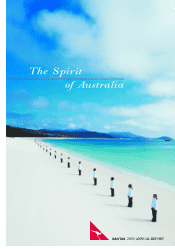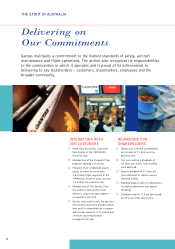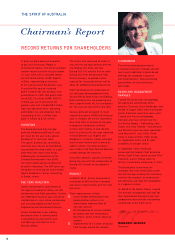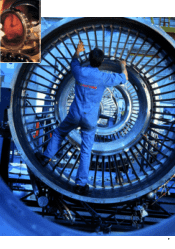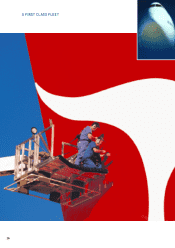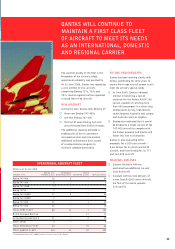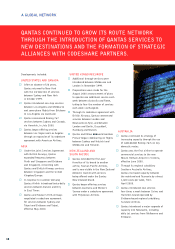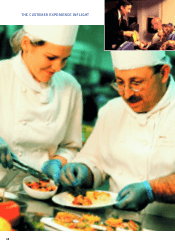Qantas 2000 Annual Report Download - page 6
Download and view the complete annual report
Please find page 6 of the 2000 Qantas annual report below. You can navigate through the pages in the report by either clicking on the pages listed below, or by using the keyword search tool below to find specific information within the annual report.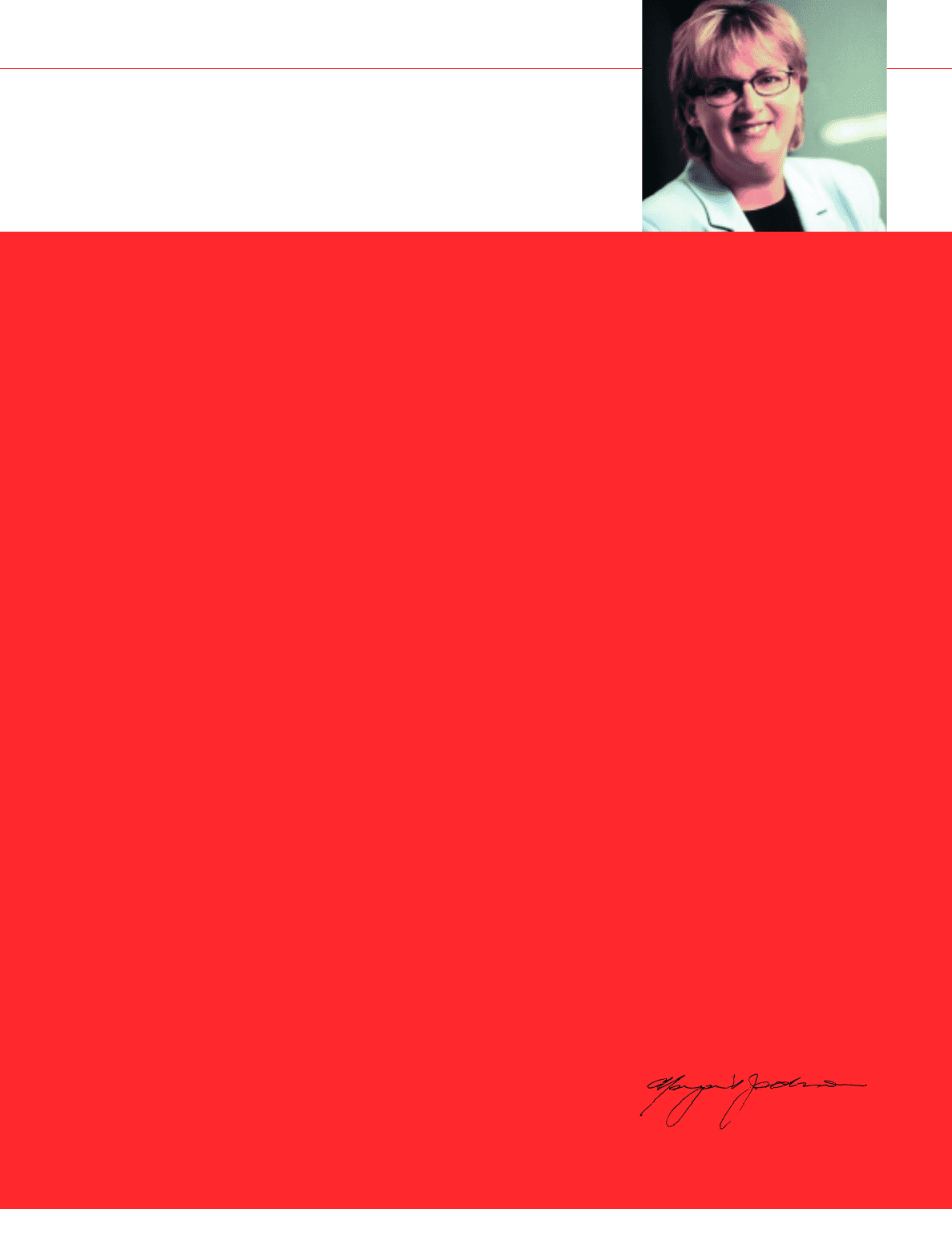
4
THE SPIRIT OF AUSTRALIA
RECORD RETURNS FOR SHAREHOLDERS
Chairman’s Report
It gives me great pleasure to present
to you my first Annual Report as
Chairman of Qantas. The airline achieved
another record result for the year ended
30 June 2000 with a net profit before
tax of $762.8 million (1999: $662.5
million), representing an increase
of 15.1 percent over the previous year.
It was the fifth year of sustained
profit increases for the company since
privatisation in 1995. Net profit after
tax of $517.9 million (1999: $420.9
million) was up 23 percent on the
previous year and included $82 million
from two abnormal items. Operating
profit before tax and abnormal items
increased by $103.3 million from
$601.7 million to $705 million.
DIVIDENDS
The Board declared fully franked
ordinary dividends totalling 22 cents
per share for the year and a special
dividend of 37 cents per share.
The special dividend was declared to
maximise your returns by distributing
accumulated franking credits in a year
when they have more value to you.
Following the reintroduction of the
Dividend Reinvestment Plan (DRP),
the fully franked special dividend will
be paid in December. The DRP gives you
the option of receiving the fully franked
special dividend in cash or reinvesting
in Qantas shares.
THE YEAR IN REVIEW
Qantas maintained its commitment to
the highest standards of safety, aircraft
maintenance and flight operations. During
the 1999/2000 financial year, the airline
invested more in core airline maintenance
and recruited additional staff for the
Engineering and Maintenance division.
Qantas established a new industry
benchmark when it commissioned
a completely new facility for seals
and bearings maintenance at its
Mascot Jetbase.
The airline also continued to invest in
new aircraft and took delivery of three
new Boeing 747-400s, one new
Boeing 767-300 and the first of seven
Boeing 767-300s being leased from
British Airways, to provide further
capacity for increased services and to
allow for additional maintenance time.
Work continued on the assessment of
aircraft types being proposed for the
Qantas fleet by both Airbus and Boeing.
Both manufacturers are proposing new
Very Large Aircraft (VLAs) and options
for 300-seat aircraft for the core fleet.
Qantas continued to expand its route
network during the 1999/2000 financial
year. In October, the airline returned to
New York after an absence of 26 years,
through the introduction of direct
services from Sydney. It also became
the first airline to fly non-stop scheduled
services between Los Angeles and
Melbourne. In March, Qantas extended
the first-ever franchise of its brand to
another airline. The Qantas brand is
now visible in the New Zealand domestic
market through the franchise.
Australian domestic capacity increased
during the year with the introduction of
Boeing 767 aircraft on key domestic
routes.
PRODUCT
In March 2000, Qantas announced an
investment of $400 million in product
and service improvements over the next
two years.
These improvements include:
"
a new inflight entertainment and
communication system in its
international long-haul fleet of
747-400 aircraft
"
the introduction of cuisine inspired
by Sydney chef and restaurateur,
Neil Perry, to the airline’s domestic
network
"
improvements to a number of Qantas
Club lounges around the network.
E-COMMERCE
The airline continued planning its
e-commerce business strategy and will
soon launch additional internet-based
offerings for corporate customers
and travel partners. New purchasing
partnerships are also starting to
take shape.
BOARD AND MANAGEMENT
CHANGES
I would like to formally acknowledge
the significant contribution of the
previous Chairman, Gary Pemberton, who
retired in August 2000 after chairing the
Qantas Board for more than seven years.
I would also like to acknowledge
Directors who have retired since the
last Annual Report – Bob Ayling, John
Ducker and Gary Toomey – and welcome
new Directors who have been appointed –
Lord Marshall (1 July 2000), Geoff
Dixon (1 August 2000), Peter Gregg
(13 September 2000) and Dr John
Schubert (23 October 2000).
In September 2000, the Board
announced that Deputy Chief Executive
Officer, Geoff Dixon, would succeed Chief
Executive, James Strong, when he
retires, as previously announced, in 2001.
The Board plans to continue the
strategies that have served Qantas well
and will manage carefully the asset base,
maintain the emphasis on productivity
and efficiency and meet the competition
in a vigorous manner.
On behalf of the Qantas Board, I would
like to thank management and staff for
their commitment during the year and
congratulate them on their outstanding
contribution to the 2000 result.
MARGARET JACKSON
Chairman

